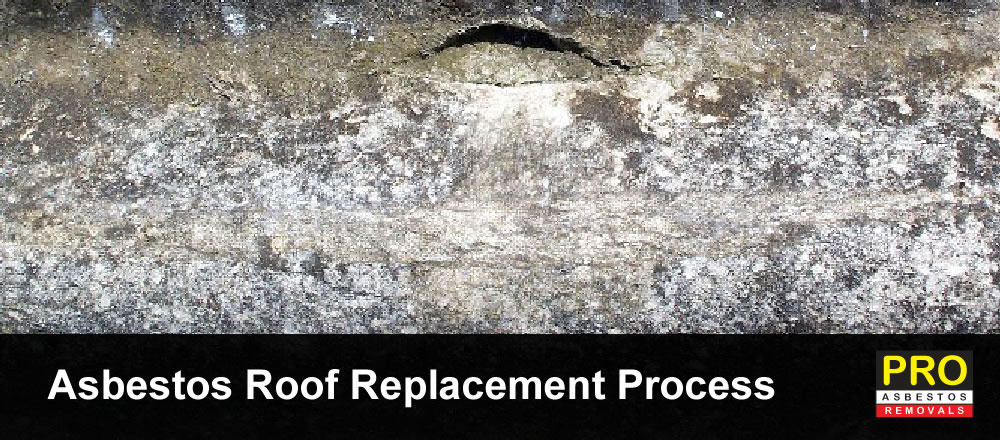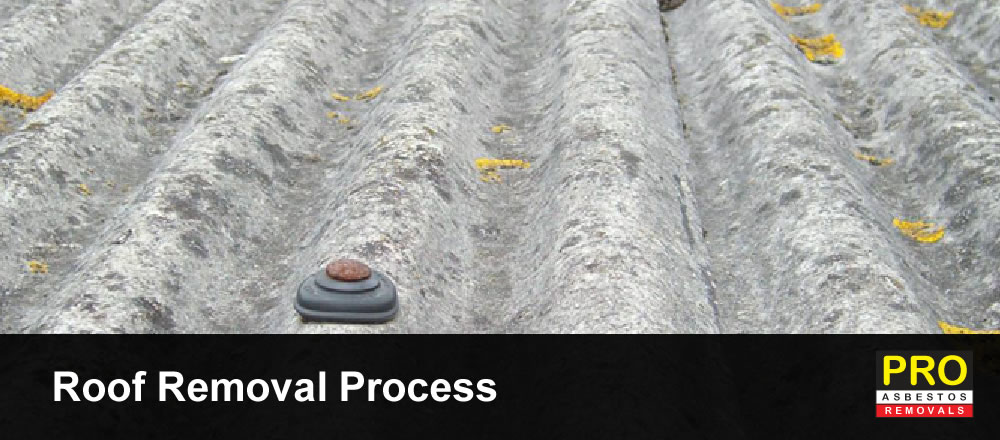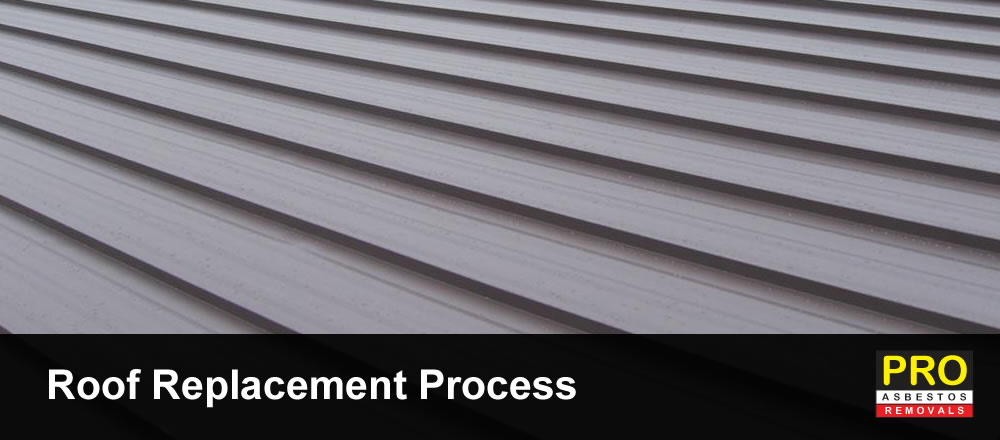Asbestos Roof Replacement Brisbane Guide
Roof Removal and Replacement Procedures and Costs
Aside from its ability to resist heat, fire, and electrical damage, asbestos is also chemically inactive, flexible, affordable, and has tensile strength. Because of these properties, it became popular in the manufacture of construction products. Today, many Australian homes have asbestos-containing roofs.
Here’s a detailed look at the process of asbestos roof replacement.
About Asbestos
In spite of its apparent benefits, asbestos poses serious health risks. New cases of Asbestos-related diseases effect Australians every year. In fact, asbestos poisoning causes 650 fatalities each year. In 2001, the Australian government designated asbestos as hazardous. Since then, rigorous safety procedures are a requirement when handling asbestos. Only licensed contractors can carry out the removal of asbestos roofs.
Types of Asbestos
There are six types of asbestos, each different from the others in both character and appearance.
Chrysotile: Referred to as white asbestos, this is the most common form of asbestos. Chrysotile causes diseases like mesothelioma.
Amosite: Brown asbestos became the second most widely used variant because of its thermal properties.
Crocidolite: This strong, durable, and fire-resistant material is considered the most dangerous variant. Blue asbestos served fireproofing, insulation, and rope-lagging purposes.
Tremolite: Strong, heat-resistant, and flexible. This variant had many commercial and industrial applications. However, tremolite is also hazardous.
Anthophyllite: Although this variant is rare and not as widely used as the others, it can cause mesothelioma.
Actinolite: As rare as it is, this type of asbestos occurs in various forms. It can be dense and compact or brittle and fibrous. Actinolite did not serve many industrial or commercial purposes as it is a known contaminant.
Asbestos Types in Australia
Chrysotile asbestos is primarily used for roofing. Approximately 95 percent of all asbestos-containing roofs are of the chrysotile variety. Brown asbestos has known to also occur in trace quantities. Because it had limited applications, not many amosite or brown asbestos roofing systems are still in existence.
Identification
Unfortunately, identifying the presence of this hazardous material is not easy. Since asbestos occurs in various shapes and sizes, asbestos-containing materials (ACM) do not look alike. In Australia, asbestos roofs came in the form of roofing tiles or corrugated roofing sheets, the former being comparatively harder to remove.
Asbestos Roof Replacement
The process of replacing an asbestos contaminated roof is quite complex. Before the installation of a new asbestos-free roof, contractors have to follow all the procedures required for safe removal. Since this hazardous material is very delicate, asbestos roof removal is a high-risk task, one that requires licensed professionals. However, the installation of a replacement roof is not as risky and challenging as the removal of an asbestos roof. If you would like further information, click on our our home page and request a free asbestos roof replacement quote.
Replacement involves a comprehensive roof evaluation, completion of the necessary maintenance and repair tasks, and the installation of a new roofing system.
Asbestos roof replacement services fall into the following categories:
- Asbestos roof removal
- Asbestos roof replacement
Here we look at the roof removal process.
Asbestos Roof Removal Process
The process of removing an existing asbestos roof is not as simple as one might expect. Following correct procedures at all times is the safest way to remove an asbestos-containing roof. Observing the national code of practice for safe asbestos removal is a must. Even so, the removal of an asbestos roof is often a multistage process in itself. Here’s a summary of the steps involved.
1. Application of PVA glue
Asbestos poses serious health risks, especially when disturbed. Unfortunately, asbestos-containing materials (ACM) can break off with very little disturbance, leading to the release of fine, needle-like fibers that our bodies cnnot expel once ingested or inhaled. As such, spraying the asbestos roof with a coat of PVA glue is usually the first step. Applying a layer of PVA Glue helps to keep the asbestos fibers from breaking free and becoming airborne during removal.
2. Removal of screws and fixings
Loosening the roofing sheets is the next step. This step involves unscrewing the screws used to secure the asbestos roof and removing each of the fixings used to hold the roofing sheets together.
3. Removal of featured installations
Many homeowners have aerials, hot water units, solar panels, and several other features installed on their roofs. To ensure such facilities do not suffer any damage, you’ll want them removed carefully.
4. Lowering the roofing sheets to the ground
As mentioned before, asbestos containing materials can break with minimal disturbance. Broken materials can from release poisonous fibers into the surrounding air.
5. Stacking, wrapping and sealing of the ACM
Because asbestos-containing materials are delicate, rough handling could cause the release of asbestos fibers. ACM is stacked in a pile, followed by wrapping. Wrapping often involves two layers of approved plastic sheeting and packages that are small enough for easy handling. Sealing the package helps to ensure a safe environment.
6. Transportation of asbestos
Asbestos is transported to an EPA-licensed landfill.
7. Cleaning the roof
Industrial-grade vacuums are used to clean the roof structure. Careful execution helps to ensure an asbestos-free environment.
8. Spray-sealing the area after removal
The removal of asbestos-containing materials is a delicate process, one that calls for meticulous care. However, there’s always a small chance some asbestos fibers will remain attached to the roof support structure, walls, ceiling, and other parts of your home after the cleaning process. While it is not a requirement, re-spraying the area with PVA solution eliminates the possibility of exposure to asbestos fibers. Spay-sealing plays a role in ensuring a safe environment.
Asbestos Roof Replacement Process
The process of replacing an existing asbestos roof can only begin after the successful completion of an asbestos roof removal process. Asbestos roof replacement involves the following steps:
1. Assessment of the structure
Careful examination of the underlying roof support structure to determine whether the structure has undergone any damage.
2. Installing Safety Equipment
Safety measures are important, especially for high-risk roof installation jobs. As such, the installation of guard rails are necessary.
3. Installing the new roof
The newly installed roofing material will depend on your budget and preferences. Roofing material options include metal or tiles. Professional roofing contractors will install the material of your choice.
4. Reinstallation of components
This step involves the installation of previously removed roofing features like hot water units, aerials, and solar panels.
4. Cleaning
Asbestos waste is taken away for disposal. Once the installation work is complete, the new roof undergoes a thorough cleaning to remove fragments, dust, debris, and dirt.
Asbestos Roof Replacement Costs
The cost of replacement varies significantly between contractors. As such, the prices included here are indicative and should act only as a guide. Since pricing involves many variables, providing as much information as possible is important.
The type of material, height, pitch, and size of your roof are a few of the factors that will determine the cost of replacement. Expect to pay an installation price of about $35 to $90 per square meter. Remember, the complexity of installation will factor into the overall cost.
Roof removal costs
Expect a minimum of $500 for any asbestos removal work. Depending on the job’s complexity, prices can range between $30 and $100 per square meter. However, you may have to pay disposal and inspection fees separately.
Wrap Up
Replacing asbestos roofs is a good investment for the future. Not only does it add value to your property and provides a safer environment for our family.
If you have any question or would like a quote don’t hesitate to contact us.




Leave A Comment